Sacred Toads
by Dr. Nicholas M. Hellmuth
As we continue with the FLAAR Reports coverage of tropical flora and fauna that were important in Classic Mayan culture, let’s look at frogs and toads. Actually, you can look at these amphibians yourself every time you go to Petén, Escuintla or Monterrico. The bloated fat toads that you see all over Guatemala were one of the most commonly worshiped animals 2,000 years ago.
Go to the Museo Nacional de Arqueología y Etnología in Guatemala City, the museums in Hotel Casa Santo Domingo in La Antigua or to Quiriguá and you will see a four-meter-long sculpture of a sacred toad that weighs more than a ton (Zoomorph G, Sculpture 43). This is Bufo marinas, the marine toad. In some parts of Guatemala, a relative, Bufo valliceps, is more common. Both have a similar feature: two large noticeable wart-like poison areas behind their ears.
The other amphibian that is common in Maya beliefs is the Uo “frog,” Rhinophrynus dorsalis, which is actually a toad. For now, I will concentrate on the Bufo marinus.
Handle with care
If your dog encounters a Bufo marinus and makes the mistake of trying to bite it he will suffer a painful death with convulsions and vomiting. Although poisonous, the toad does not attack, bite or sting. I have frequently picked up the toad. As long as the toad, or really most wild animals, senses that you will not hurt it, the creature will accept being picked up.
The toad will try to swell up its body to a much larger size to encourage you to set it down. But this is pure bluff. The toad will let the air out and return to natural size in a few minutes. Just don’t put your fingers anywhere near the poison glands. The toad activates the poison only when it feels in danger. The poison does not shoot out; it simply oozes to the surface of the poison-pad area.
The poison glands were precisely what the Maya were interested in. To me, what is important is how common this creature is in Mayan art, especially in Preclassic stone sculpture and in the Late Classic period, such as the Quiriguá Zoomorph of brown sandstone.
In the Popol Vuh a toad is one of the messengers of the gods of Xibalba. The message starts in the belly of a louse, which is swallowed by a toad. The toad is swallowed by a snake. The snake is picked up by a falcon or hawk and delivers the message of the gods to the Hero Twins.
It would be helpful to fully document that the toad of the Popol Vuh was potentially a Bufo marinus. If this toad is native to the highlands of Quiché it would help, but in fact most of the animals mentioned in the Popol Vuh are lowland species from the Chiapas and Petén rainforests. The heroes of the Popol Vuh were seemingly already part of proto-Mayan legends and myths in the Preclassic Chiapas area of Izapa. So even if the Bufo marinus is not common in the altitude of Quiché, that would by no means rule out the possibility that the messenger toad is this species.
Deadly toad juice cocktail
This recipe is poisonous beyond comprehension. Plus, bufotenine has been outlawed for human consumption since the 1960s. But in the Colonial period, friar Thomas Gage recorded that the Pokoman Maya soaked the toad in their drinks—one might assume to get some of the essence. Archaeologists have found plenty of toad skeletons when they excavated Olmec sites (Michael Coe). So there is abundant evidence that the early people in Mesoamerica used toads in their rituals.
We do not know whether the purpose was to poison people, drug sacrificial victims or to induce hallucinations. Remember, the essence exuded by the toad is poisonous, but there are some tribes in South America that have used other natural chemicals to counteract the deadly reactions. But avoid consumption—not even a taste test (that alone is enough to land you in intensive care or the morgue).
Monumental representations
If you look at the Izapa sculptures (especially stelae), you will quickly sense how important this toad was to the religious and political beliefs of the Preclassic peoples. Izapa is a proto-Mayan site on the Mexican-Guatemalan border outside of Tapachula, Chiapas. The toad is depicted about a meter in size.
Then you get the three-dimensional renditions in stone sculpture, especially in Izapa and in the Kaminaljuyú area of highland Guatemala. These vary in size but many are up to a meter. Izapa Altar 1, 2, 6 and 54 and Kaminaljuyú Altars 3 and 6 are a few examples (article by Kappelman).
Enjoy your new curiosity about giant poisonous toads in Mayan culture. Ask your friends if they have this toad on their finca. You see them at night under lights, which attract insects, which in turn attract the hungry toads.
In La Antigua you can find some of the key books on the Izapa sculptures in the library at CIRMA (the Center for Regional Investigations of Mesoamerica) at 5a calle oriente #5. The names, titles, and publishers are too long to include in this article, so simply go to my web site, www.maya-archaeology.org, and find the link to our page on toads or Bufo marinus.
- The toad image was very common in Mayan art
- The poisonous Bufo marinus toad
- The poisonous Bufo marinus toad
- Bufo marinas, a marine toad, has two large noticeable wart-like poison areas behind the ears. Although extremely poisonous, the toad does not attack, bite or sting.
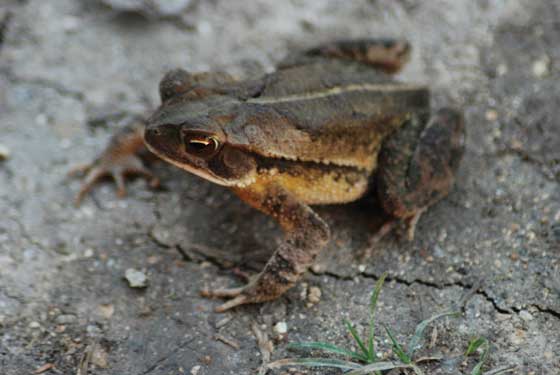
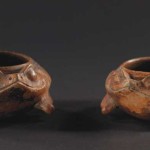
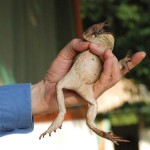
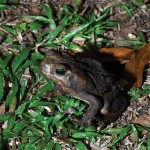
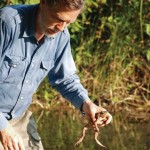
Great article. Can you recommend a good illustrated, complete reference for toads and frogs of Guatemala?
Toads and other animals mentioned in the Popol Vuh are found on Guatemala pacific coast. Not just Chipas and Peten.
I acquired a stone mayan road on the underside are 2 small bowls say one inch and smaller bowl say 1 half inch for dart or arrow poisons. Know the value? Say it’s 500 or more years